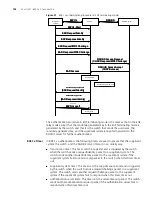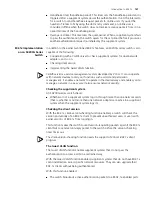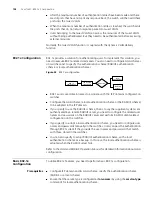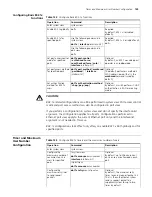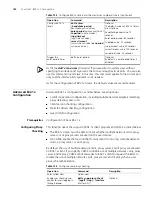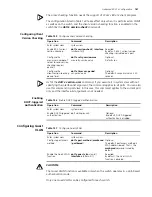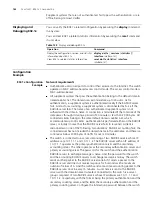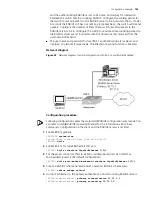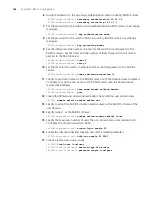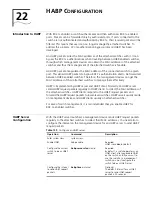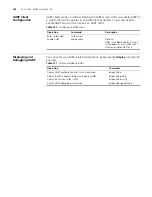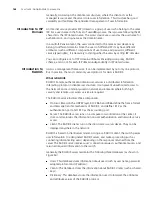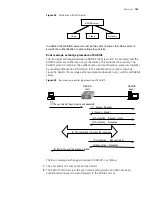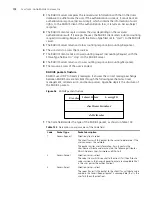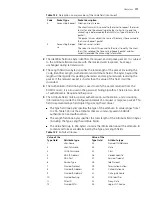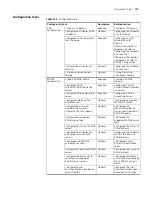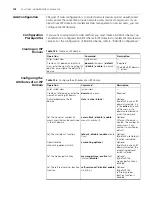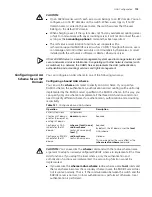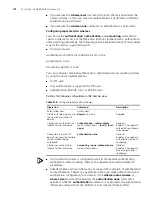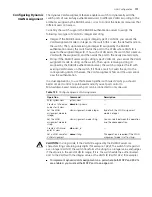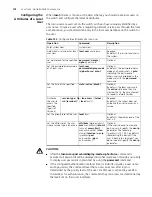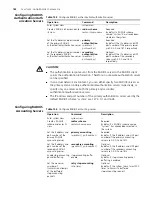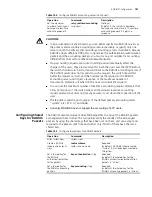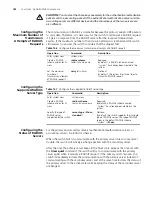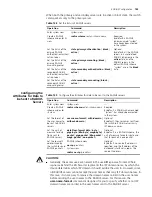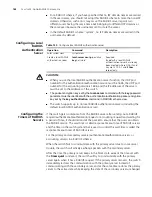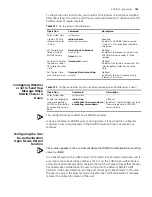
170
C
HAPTER
23: AAA&RADIUS C
ONFIGURATION
3
The RADIUS server compares the received user information with that in the Users
database to authenticate the user. If the authentication succeeds, it sends back an
authentication response (Access-Accept), which contains the information of user’s
rights, to the RADIUS client. If the authentication fails, it returns an Access-Reject
response.
4
The RADIUS client accepts or denies the user depending on the received
authentication result. If it accepts the user, the RADIUS client sends a start-accounting
request (Accounting-Request, with the Status-Type filed set to “start”) to the RADIUS
server.
5
The RADIUS server returns a start-accounting response (Accounting-Response).
6
The use starts to access the resources.
7
The RADIUS client sends a stop-accounting request (Accounting-Request, with the
Status-Type field set to “stop”) to the RADIUS server.
8
The RADIUS server returns a stop-accounting response (Accounting-Response).
9
The resource access of the user is ended.
RADIUS packet structure
RADIUS uses UDP to transmit messages. It ensures the correct message exchange
between RADIUS server and client through the following mechanisms: timer
management, retransmission, and backup server. Figure 56 depicts the structure of
the RADIUS packets.
Figure 56
RADIUS packet structure
1
The Code field decides the type of the RADIUS packet, as shown in Table 132.
Code
Identifier
Length
Authenticator
Attribute
Table 132
Description on major values of the Code field
Code
Packet type
Packet description
1
Access-Request
Direction: client->server.
The client transmits this packet to the server to determine if the
user can access the network.
This packet carries user information. It must contain the
User-Name attribute and may contain the following attributes:
NAS-IP-Address, User-Password and NAS-Port.
2
Access-Accept
Direction: server->client.
The server transmits this packet to the client if all the attribute
values carried in the Access-Request packet are acceptable (that
is, the user passes the authentication).
3
Access-Reject
Direction: server->client.
The server transmits this packet to the client if any attribute value
carried in the Access-Request packet is unacceptable (that is, the
user fails the authentication).
Summary of Contents for 4200G 12-Port
Page 10: ...8 CONTENTS...
Page 14: ...4 ABOUT THIS GUIDE...
Page 46: ...32 CHAPTER 5 LOGGING IN THROUGH WEB BASED NETWORK MANAGEMENT SYSTEM...
Page 48: ...34 CHAPTER 6 LOGGING IN THROUGH NMS...
Page 60: ...46 CHAPTER 9 VLAN CONFIGURATION...
Page 64: ...50 CHAPTER 10 MANAGEMENT VLAN CONFIGURATION...
Page 80: ...66 CHAPTER 13 GVRP CONFIGURATION...
Page 98: ...84 CHAPTER 15 LINK AGGREGATION CONFIGURATION...
Page 112: ...98 CHAPTER 18 MAC ADDRESS TABLE MANAGEMENT...
Page 126: ...112 CHAPTER 19 LOGGING IN THROUGH TELNET...
Page 162: ...148 CHAPTER 20 MSTP CONFIGURATION...
Page 274: ...260 CHAPTER 29 IGMP SNOOPING CONFIGURATION...
Page 276: ...262 CHAPTER 30 ROUTING PORT JOIN TO MULTICAST GROUP CONFIGURATION...
Page 298: ...284 CHAPTER 33 SNMP CONFIGURATION...
Page 304: ...290 CHAPTER 34 RMON CONFIGURATION...
Page 338: ...324 CHAPTER 36 SSH TERMINAL SERVICES...
Page 356: ...342 CHAPTER 38 FTP AND TFTP CONFIGURATION...
Page 365: ...Information Center Configuration Example 351 S4200G terminal logging...
Page 366: ...352 CHAPTER 39 INFORMATION CENTER...
Page 378: ...364 CHAPTER 40 BOOTROM AND HOST SOFTWARE LOADING...
Page 384: ...370 CHAPTER 41 Basic System Configuration and Debugging...
Page 388: ...374 CHAPTER 43 NETWORK CONNECTIVITY TEST...
Page 406: ...392 CHAPTER 45 CONFIGURATION OF NEWLY ADDED CLUSTER FUNCTIONS...

